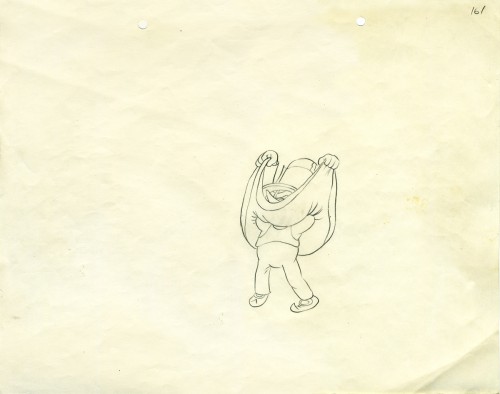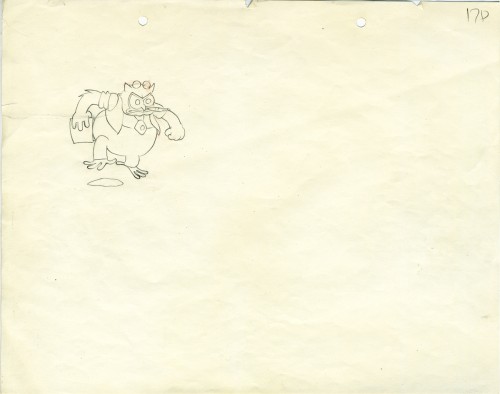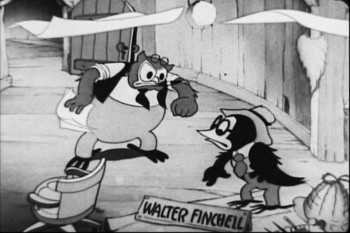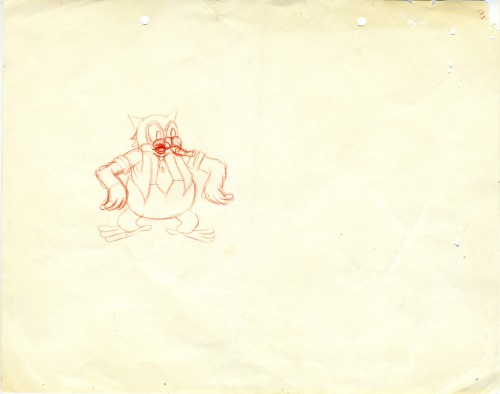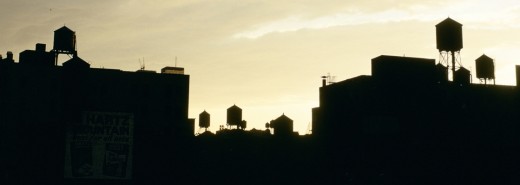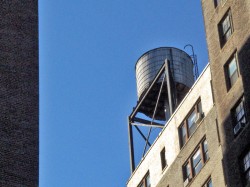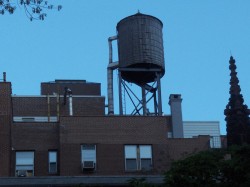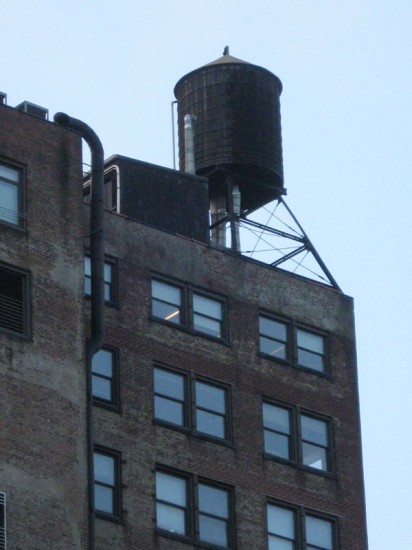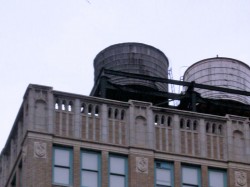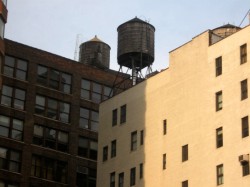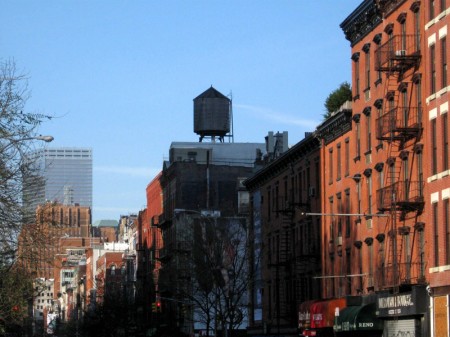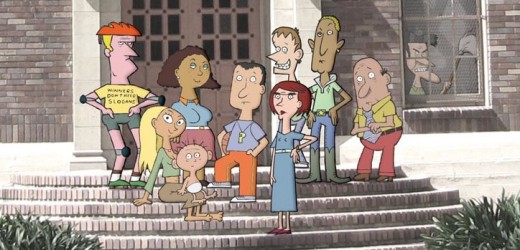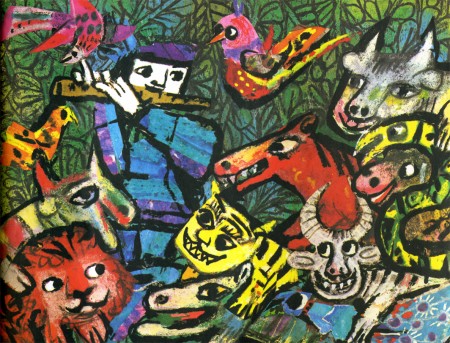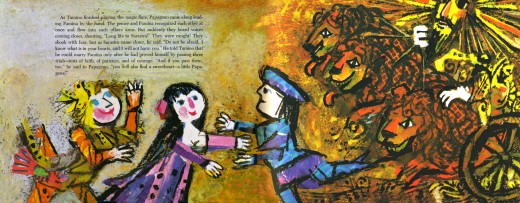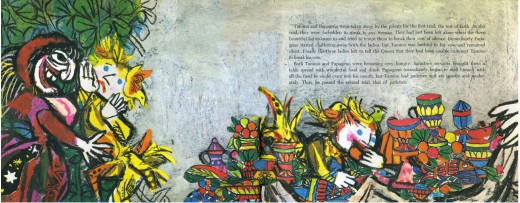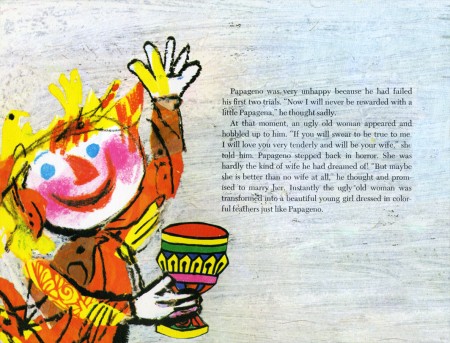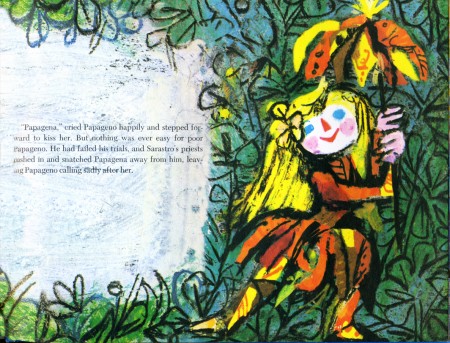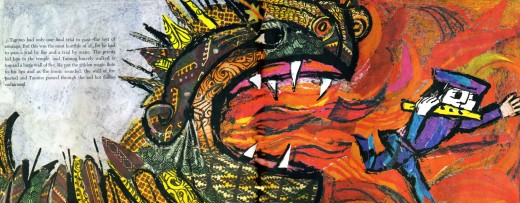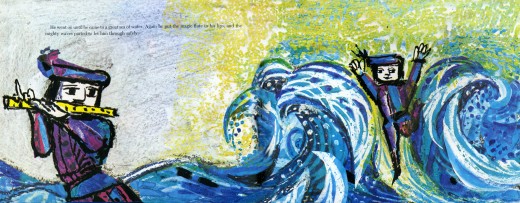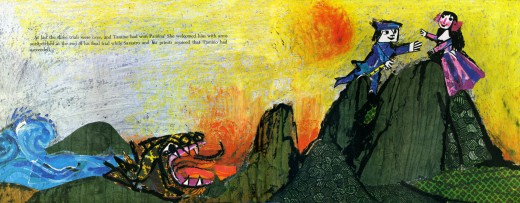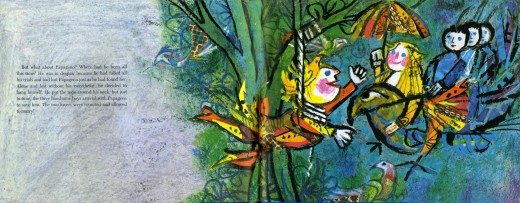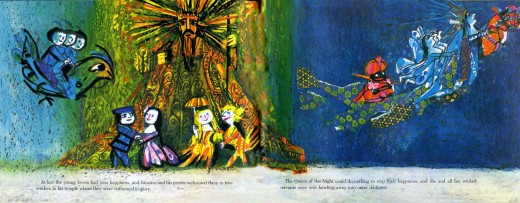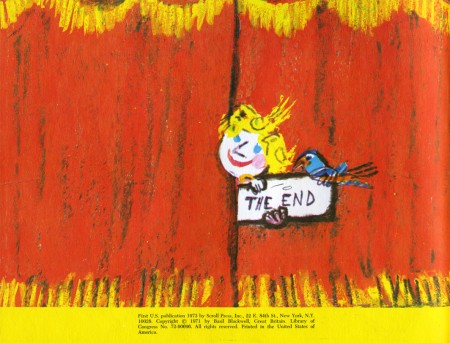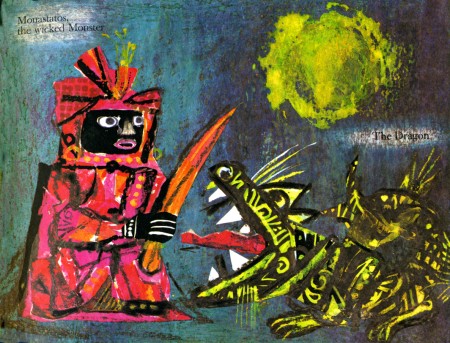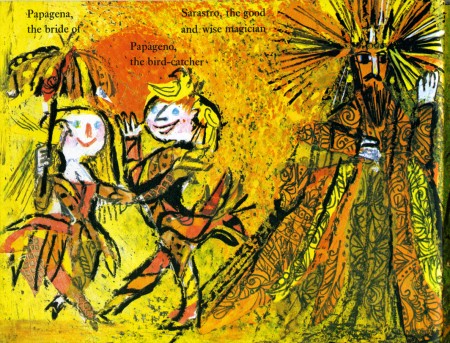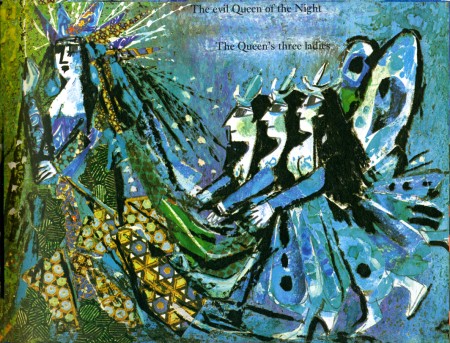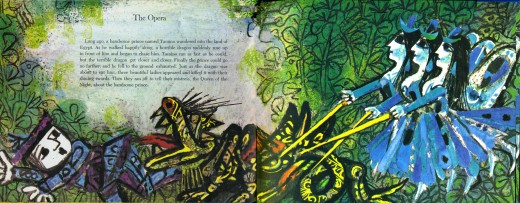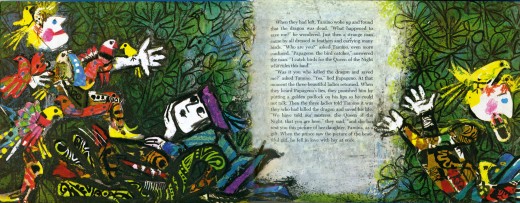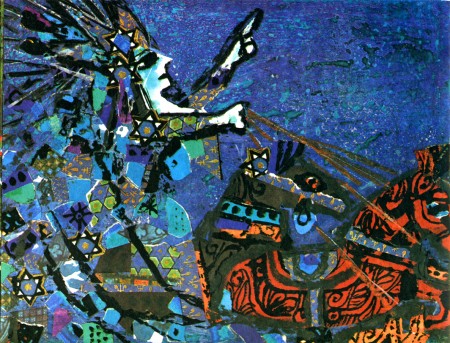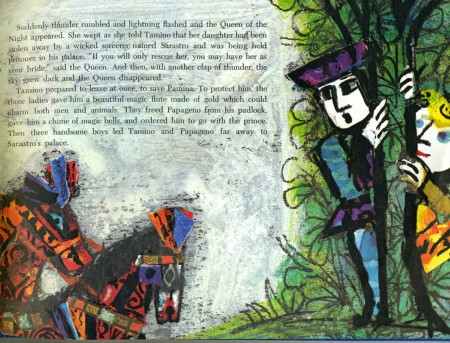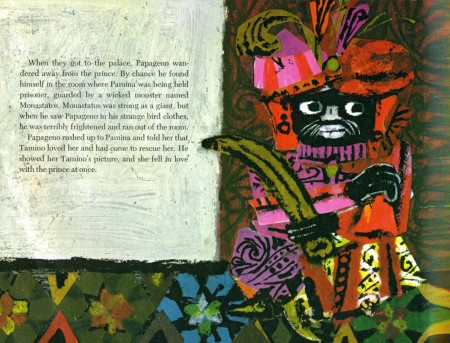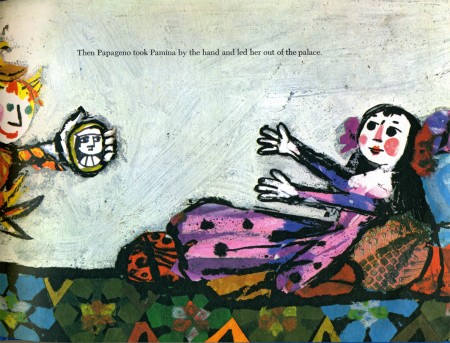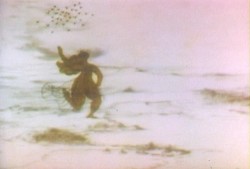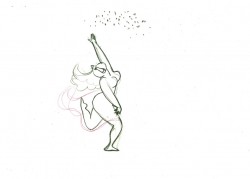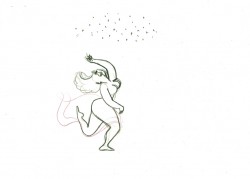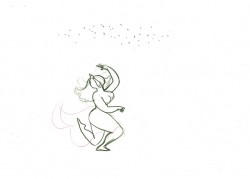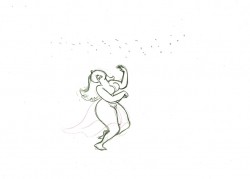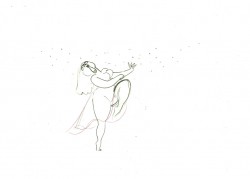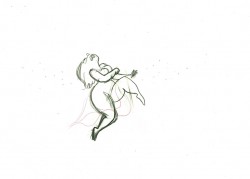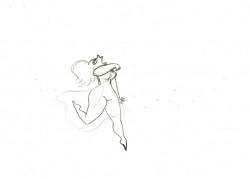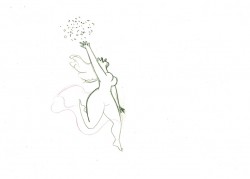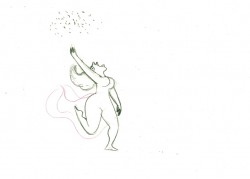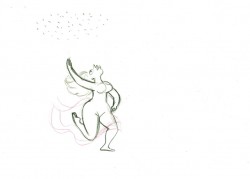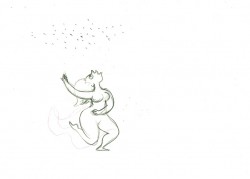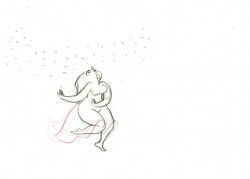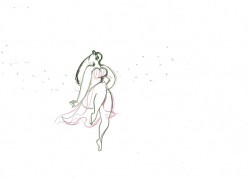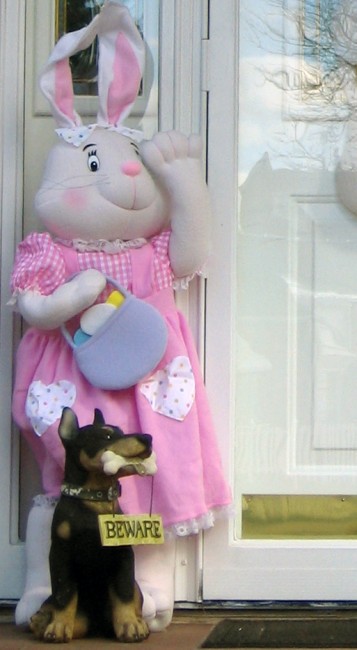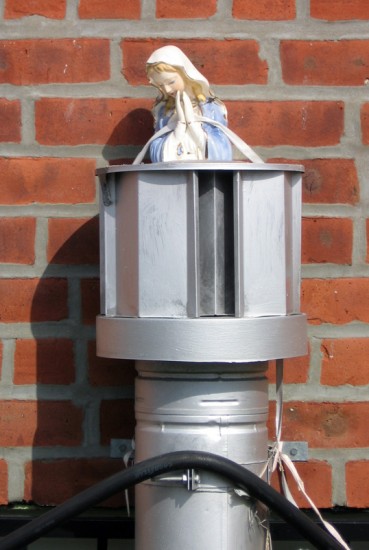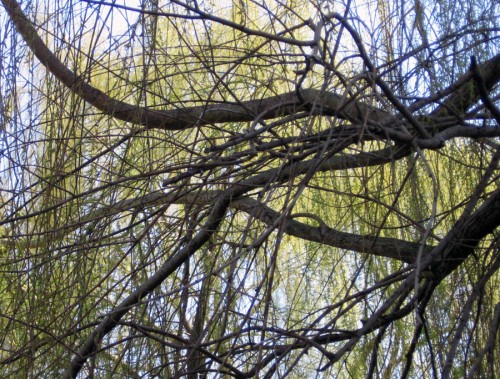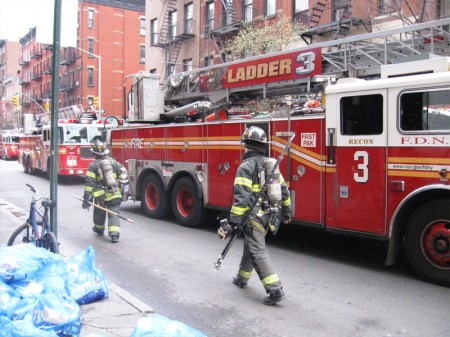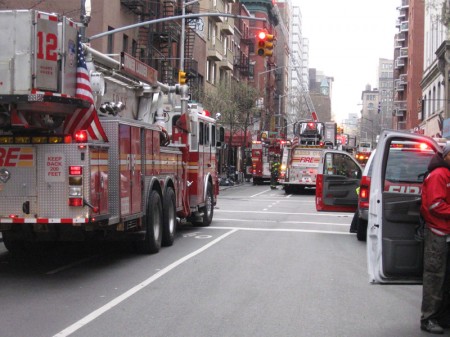Monthly ArchiveApril 2009
Animation Artifacts &Models 20 Apr 2009 07:39 am
Van Buren stills
A short while back I found a couple of Van Buren animation drawings for sale on Ebay. I bought them and have been waiting for the new DVD from Steve Stanchfield and Thunderbean Animation. Toddle Tales is a gem of a dvd, and I was able to locate my drawings in the cartoons available.
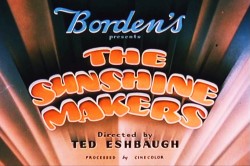 I already have several copies of The Sunshine Makers, which is probably the most famous of the Rainbow Parade cartoons. This was a film that was apparently done for Borden’s milk, and features one of the screwiest animation stories ever.
I already have several copies of The Sunshine Makers, which is probably the most famous of the Rainbow Parade cartoons. This was a film that was apparently done for Borden’s milk, and features one of the screwiest animation stories ever.
A bunch of little guys (named “Joy” on the model sheets) deliver bottled sunshine (which looks a lot like milk) somewhere. We never see who’s receiving the sunshine, but carts of these elves are delivering it.
Other little guys (named “Gloom”) don’t want the sunshine delivered. We see one of these top-hatted characters shoot an arrow at a Joy guy, and gloomy gus ends up getting bathed in sunshine.
My drawing reveals him taking off his outer clothes to bury them.
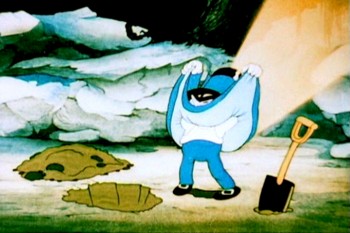
(Click any image to enlarge.)
The other two drawings I bought were a mystery to me. However, I was easily able to find them in the cartoon A Little Bird Told Me.
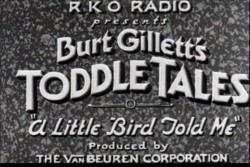
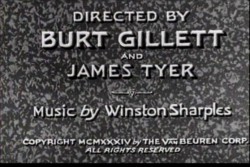
Burt Gilette & JIM TYER directed the film, and the music is by Winston Sharples,
who scored most of the Paramount cartoons later in life.
This is an equally odd short. A live action (it looks like second-rate Our Gang of the early 30s) child gets caught eating jam. His sister wipes him clean. However the bird in the tree tells all about it.
Apparently, there’s a bird newspaper just out the kitchen window. Walter Finchell is assigned the story by his owl editor. Here’s where my drawings come in. The owl editor comes out to hand over the story.
One of the drawings is an exact match. The other is close.
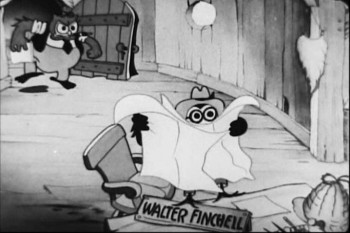
Thunderbean also includes a few model sheets on the dvd. Here’s one of my editor owl.
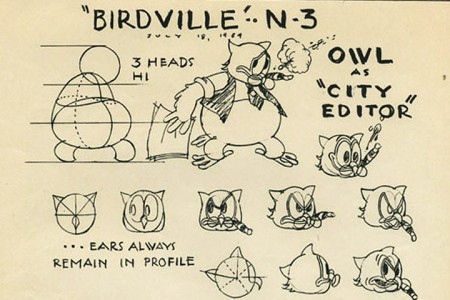
Photos 19 Apr 2009 08:07 am
Water Towers
- A recent post I’d done on Fire Escapes brought the suggestion that I show some Water Tanks, another key to the identity of NYC. It took only five minutes for Steve Fisher to send two photos, one above and the other below.
Of course, in New York, any way you turn you can see some water tower or other in many different shapes and sizes.
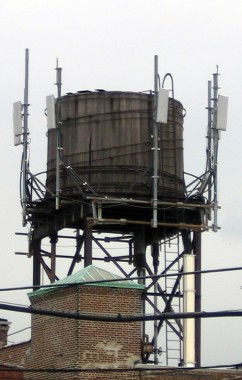
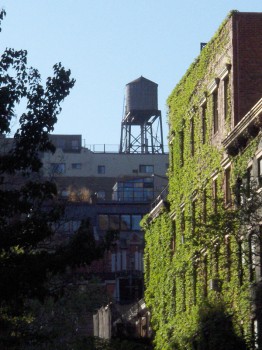
(Click any image to enlarge.)
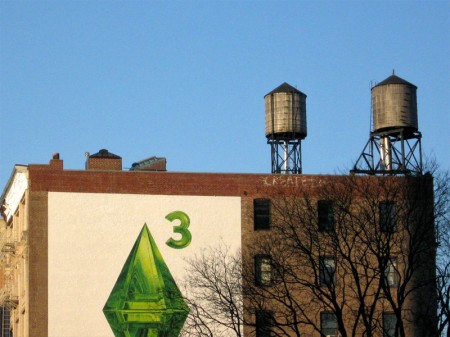
Many buildings feature more than one tower.
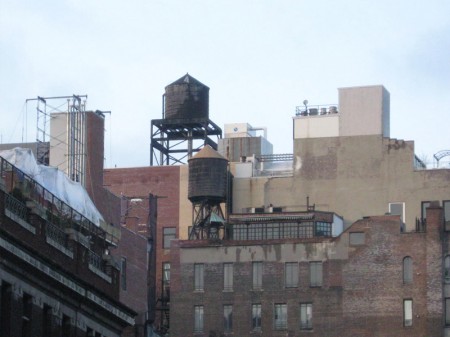
Some towers seem to be layered on different levels.

Some are lifted far from the roof trying to get them higher.
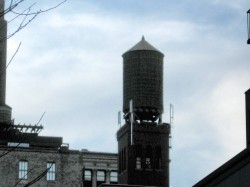
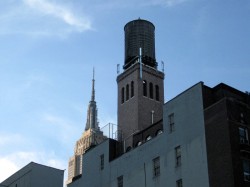
This tower is oddly long in shape. Again , like many others you see
it’s built on a sort of pedestal so that it’s as high as they can get it.
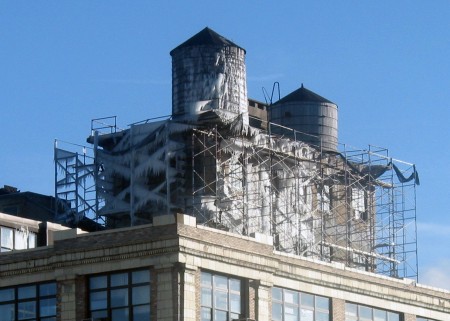
Here, courtesy of Steven Fisher is a water tower in SoHo that burst
mid winter. All the water froze on the side of the building.
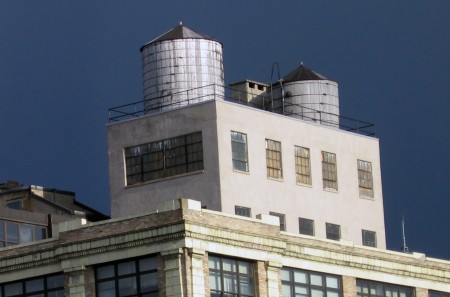
Here’s the very same tower after it and the building have been
restored the next Spring.
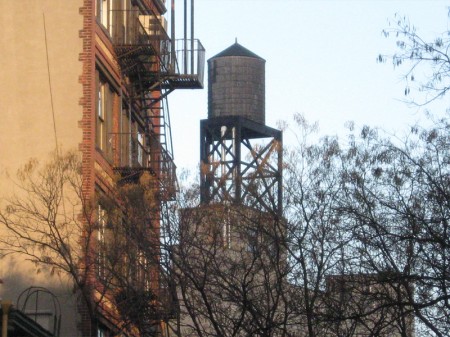
In the end they become a part of the City’s silhouette, an important part of the character. Like many elements in the city, they become
just part of the background and rarely noticed for their own sake.
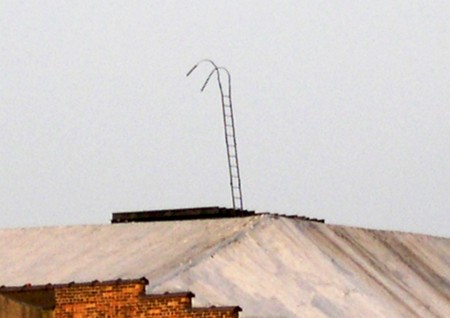
One last picture.
Steve Fisher sent me a photo of what remains after the
water tower has been removed – in a slapdash fashion, I might add.
Daily post 18 Apr 2009 08:46 am
Bits & Pieces
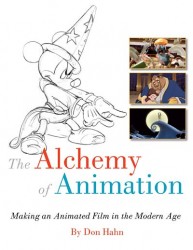 - Michael Barrier has an interesting piece on his site reviewing two Disney books: Amid Amidi’s The Art of Pixar Shorts and Don Hahn’s The Alchemy of Animation. I certainly agree with what Mike has to say. I’d already commented on Amid’s attractive book on this site back in February; as a matter of fact, I actually wrote about all of Amid’s books. I haven’t seen Don Hahn’s new book yet, but, if it’s like his last book, my general feeling was that I wish he’d dig a little deeper. He has a lot to say and he has the ability to write. I’d really like to see him write about the job of producing a Disney animated feature. He’s in a select club, and it’d be interesting to hear his heartfelt comments. Maybe someday.
- Michael Barrier has an interesting piece on his site reviewing two Disney books: Amid Amidi’s The Art of Pixar Shorts and Don Hahn’s The Alchemy of Animation. I certainly agree with what Mike has to say. I’d already commented on Amid’s attractive book on this site back in February; as a matter of fact, I actually wrote about all of Amid’s books. I haven’t seen Don Hahn’s new book yet, but, if it’s like his last book, my general feeling was that I wish he’d dig a little deeper. He has a lot to say and he has the ability to write. I’d really like to see him write about the job of producing a Disney animated feature. He’s in a select club, and it’d be interesting to hear his heartfelt comments. Maybe someday.
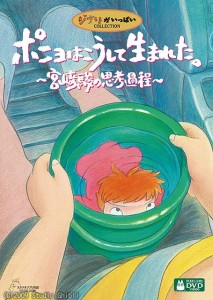 - Ponyo on the Cliff, as you may already know, is going to be released theatrically by Disney in an English language version on Aug. However, if you’re as manic about Miyazaki’s work as I am, you may want to send, in advance, for the Japanese dvd which will be released in July. It includes English subtitles. That edition is available for pre-order now at Amazon.jp.
- Ponyo on the Cliff, as you may already know, is going to be released theatrically by Disney in an English language version on Aug. However, if you’re as manic about Miyazaki’s work as I am, you may want to send, in advance, for the Japanese dvd which will be released in July. It includes English subtitles. That edition is available for pre-order now at Amazon.jp.
There will be two versions of this DVD. There is a basic edition and there is a nine disc set that includes the film, a twelve-hour five-disc making of documentary, and a two disc live performance from Miyazaki’s regular composer Joe Hisaishi. That peculiar documentary is also available on its own, in case you want to wait for the American version of the film and just want this extra. It would appear to me that the extras do not have English subtitles.
To keep up with news of this material, you might want to be watching Daniel Thomas MacInnes‘ excellent site, Ghibli Blog. It was recently remodelled and has an attractive new format. You’ll find 6 excellent clips from this Miyazaki film on this site. (Go here and scroll down a bit.)
- Here’s another site that I’m sure you are all aware of, but it doesn’t hurt to keep mentioning it. The National Film Board of Canada has on their site quite a few of their classic films for viewing, for free. If you’re not aware of these films or haven’t seen them, then got there and look. There are some absolute classic gems there in good editions.
Make sure you at least see the following shorts:
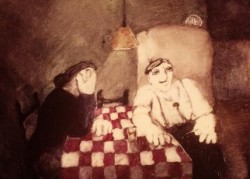 Start with these two Caroline Leaf shorts:
Start with these two Caroline Leaf shorts:The Street
Two Sisters
Then go at random to any of these:
The Sweater – Sheldon Cohen
The Big Snit – Richard Condie
Cat’s Cradle – Paul Driessen
The Great Toy Robbery – Jeff Hale
The Romance of Transportation in Canada – Colin Low
The Tender Tale of Cinderella Penguin - Janet Perlman__________________________Caroline Leaf’s brilliant film The Street
Walking – Ryan Larkin
When the Day Breaks – Wendy Tilby Amanda Forbis
Christmas Cracker – Norman McLaren, Gerald Potterton, Grant Munro, Jeff Hale
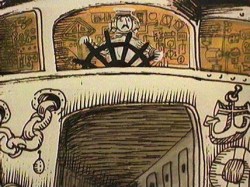 and, it goes without saying that you should know by heart the following Norman McLaren shorts:
and, it goes without saying that you should know by heart the following Norman McLaren shorts:
Begone Dull Care
A Chairy Tale
La Merle
Hen Hop
Now, if I can make a request of the NFB: please add the Hubley short, The Cruise, to this list. It’s rarely seen and an important film in the canon of Hubley’s work.
Hubley’s The Cruise
- In case you’ve missed all the press releases, Fox has a new show premiering on Sunday evening at 8:30 PM Eastern. Sit Down Shut Up comes from the mind of Mitchell Hurwitz. He was the creator of Arrested Development, a writer on The Ellen Show and The Golden Girls. His writing compatriots come from the staff of Two and A Half Men. The voice cast is filled with a lot of talented comedians.
A lotta heavy-duty TV credentials.
There’s a NYTimes article in Friday’s paper which includes a confusing clip. And here’s another article in Saturday’s paper.
The NYDaily News review is headlined: From the Grossout School of Comedy and gives it three stars.
Variety‘s review includes the line: “Seemingly preoccupied with impressing teenage boys, the show should possess scant appeal outside that demo.”
Hmmm.
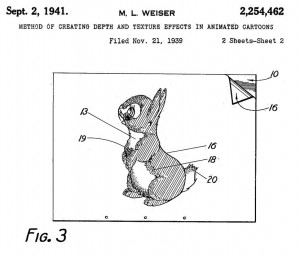 - Far and away, one of the most consistently excellent and important animation sites out there is Hans Perk‘s extraordinary AFilmLa. The documents Hans posts regularly are just incredible. Where does he find them?
- Far and away, one of the most consistently excellent and important animation sites out there is Hans Perk‘s extraordinary AFilmLa. The documents Hans posts regularly are just incredible. Where does he find them?
Currently he’s running a patent filing for “The Blend“. Mary Louise Weiser, head of the Ink and Paint Department at the Walt Disney Studios in 1939, registered two patents for inventions she claimed for the Disney studio.
.
Hans posts all of the patent documents and a brilliant photo of Mary Louise Weiser.
By the way, I also note that the comments on Hans’ site are always so few. It’s impossible to believe that so few have anything to say about the material that’s found there!
Books &Illustration &Luzzati & Gianini 17 Apr 2009 07:51 am
The Magic Flute – 2
- This post concludes the images from The Magic Flute, a book by Emauele Luzzati. The illustrations are reworked sketches and drawings done for the animated feature he did with animator, Giulio Gianini in 1978.
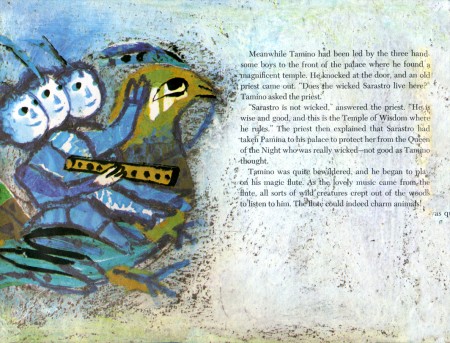 13
13(Click any image you’d like to enlarge.)
Books &Illustration &Luzzati & Gianini 16 Apr 2009 08:06 am
The Magic Flute – 1
- Emanuele Luzzati teamed with animator Giulio Gianini many times to produce some of the most beautiful films of the 60s & 70s. Their feature version of The Magic Flute completed in 1978 was also adapted into a book by Luzzati. He’d done the sets and costumes for a version of the opera in 1963.
The film didn’t get the attention it deserved, and it remains hard to locate. A small snippet is incorporated into a video on YouTube. (The animation doesn’t come on until about a minute of the piece.)
I originally saw the film when it once aired on local WNET (PBS station). It wasn’t repeated and video wasn’t available back then. However, I do have the children’s book which Luzzati published from his designs for the animation.
Here are the first half of the illustrations in the book.
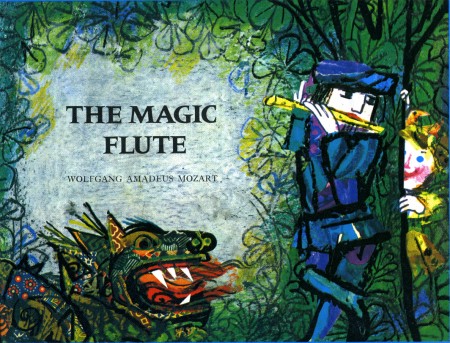
(Click any image to enlarge.)
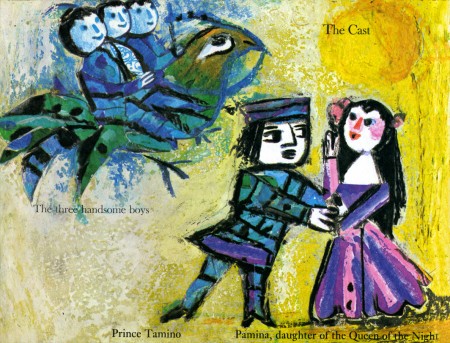 1
1
I left the type in the illustrations, though it’s a bit hard to read.
To be concluded tomorrow.
Animation &Hubley 15 Apr 2009 07:44 am
Hub Eyes
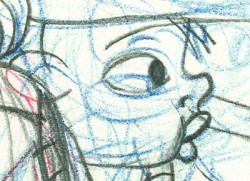 - It was 1973, and I was happily – I can’t tell you how happily – ensconced in the Hubley studio working on Letterman, a new series for an upcoming CTW show, The Electric Company.
- It was 1973, and I was happily – I can’t tell you how happily – ensconced in the Hubley studio working on Letterman, a new series for an upcoming CTW show, The Electric Company.
It was my first animation job. I inked it all (directly from animator roughs), I assisted & inbetweened it all, and I animated odd scenes including all the title sequences. I was a novice, and I was doing it all. Excited and happy is all I can remember.
I was alone one morning in the small room wherein I worked. I made a habit of getting into work before anyone and leaving after everyone. I wanted to make sure I was indispensible.
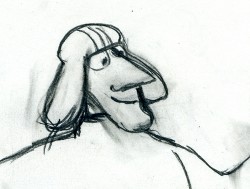 A month into the gig, and I think I’d only spoken with my hero, John, about a half dozen times. I was rushing through one of the Johnny Gent “Spellbinder” sequences. I inked all of his scenes, then inbetweened in ink the drawings. No time to work in pencil for this schedule. Johnny was completely off character, in a very old fashioned way, and I had to rework them all closer to the models – in ink. The schedule just gave me no time to be proud of what was happening. (A year or so later I apologized to Johnny for what I did to his artwork. I was so inexperienced and had such a dominant role in how the final art looked in that series.)
A month into the gig, and I think I’d only spoken with my hero, John, about a half dozen times. I was rushing through one of the Johnny Gent “Spellbinder” sequences. I inked all of his scenes, then inbetweened in ink the drawings. No time to work in pencil for this schedule. Johnny was completely off character, in a very old fashioned way, and I had to rework them all closer to the models – in ink. The schedule just gave me no time to be proud of what was happening. (A year or so later I apologized to Johnny for what I did to his artwork. I was so inexperienced and had such a dominant role in how the final art looked in that series.)
John Hubley ran in to give me something and made a quick comment about the character I’d been drawing. He said it was a “Paramount eye.” I looked at the drawing, then at him. Then John drew on a small piece of paper a “Disney eye,” then a “Terrytoon eye.” He laughed aloud and told me to try to square off the eyes a bit. Then he ran out.
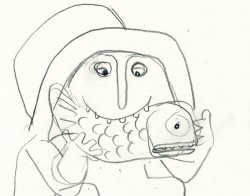 I learned a lot that day. I watched eyes that day and probably all that week. I ran Hubley films at lunchtime (I’d made it a habit to project their films in the kitchen during many of the lunch breaks. The entire group enjoyed these sessions) and watched the eyes. I talked with Tissa David about eyes in one of our evening tutorials – she was trying to teach me how to inbetween properly.
I learned a lot that day. I watched eyes that day and probably all that week. I ran Hubley films at lunchtime (I’d made it a habit to project their films in the kitchen during many of the lunch breaks. The entire group enjoyed these sessions) and watched the eyes. I talked with Tissa David about eyes in one of our evening tutorials – she was trying to teach me how to inbetween properly.
I was reminded of this moment when Chuck Rekow commented on the Moonbird Walk posted weeks ago. “The shape of the eyes on the boys is a real departure from almost anything in the cartoon world —even 50′s era. It’s closer to real life, and reminds me of the graphic style of Ben Shahn. It lends the film an aura of “seriousness”, even though it’s a cute film about two boys and an imaginary bird. Obviously, the pre-recorded sound is a major deal, but this gem is loaded with touches of inventive detail.”
How right he is, and I love being reminded of it.
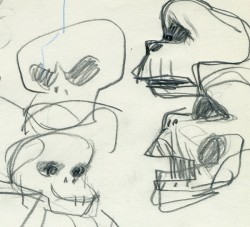 The eyes are the direct route to the soul of a person and, consequently, an animated character as well.
The eyes are the direct route to the soul of a person and, consequently, an animated character as well.
After working for the Hubley studio, for a short bit, I worked for Phil Kimmelman and Associates. This was a hardy commercial studio doing tight designer-based animation. Rowland Wilson was doing a lot of their design work, and the animation clean-up was tight. Animators Jack Schnerk, Sal Faillace and Dante Barbetta did a lot of the work the few months I was there. I worked primarily as an inbetweener and learned some hard and tight lessons while there.
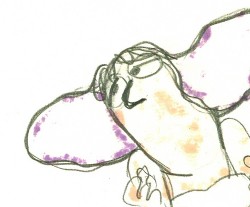 After the very loose work I’d been doing for the Hubley films, it was not only difficult for me, but good to keep me towing the proper line. I wanted to learn animation, and all of it was important.
After the very loose work I’d been doing for the Hubley films, it was not only difficult for me, but good to keep me towing the proper line. I wanted to learn animation, and all of it was important.
Here, too, an empahsis was on the eyes. No Disney eyes, no Hubley eyes, either. But now I was just concerned with keeping those lines tight tight tight. No shimmer on the eyeballs. After all, I was told, people stared into the characters’ eyes, and any flaws in the animation would show up first in those eyes.
I worked for PK&A for about three or four months. I’d also worked for Tubby the Tuba at NYInstitute of Technology under Johnny Gentilella, where we got somewhat close and I was able to discuss all sorts of animation problems with him. That was the only redeeming element, everything else about the studio was wretched. My displeasure ultimately led to my leaving as soon as I could.
Eventually, I was back at the Hubley studio helping to finish up the short Cockaboody.
The tightening of my inbetweening only brought positives to what I could now do for John Hubley’s animation.
To this day, I still watch eyes closely. For some reason, the tighter the lnework, the closer I watch the assistant’s work. The looser the line, the more I watch the design. I prefer watching the design. Often it means eyes that can be easily labelled: Disney, Paramount, or Terrytoons. I suppose today, you’d say: Pixar, Dreamworks or Blue Sky. (And believe me, you can see those differences even in cg.)
The images above are from the following films:
Books &Disney &Mary Blair 14 Apr 2009 08:16 am
Chouinard the Book
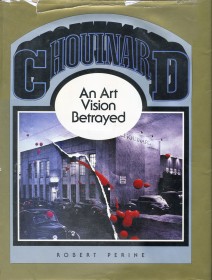 - I recently came upon an excellent book, Chouinard/An Art Vision Betrayed by Robert Perine published in 1986. This book is the history of the school that would become CalArts.
- I recently came upon an excellent book, Chouinard/An Art Vision Betrayed by Robert Perine published in 1986. This book is the history of the school that would become CalArts.
I suspect it’s more familiar to those on the West Coast than we on the other side of the continent. Regardless, the book well documents the connection between this art school and the Disney studio, particularly in the early days.
Here we’re treated to a good history of Don Graham, who led the Disney classes for Walt during the ’30s expansion movement. We also come upon students and teachers including all the famous names: Phil Dike, Virgil Partch, Hardie Gramatky, Retta Scott, Mary and Lee Blair, Ward Kimball and many others. We’re also treated to photos and artwork by these people. We also see a clear picture of the school’s founder, Nelbert Chouinard.
I’ve pulled a couple of photos and art pieces and a couple of paragraphs from the first chapter which I thought worth sharing.
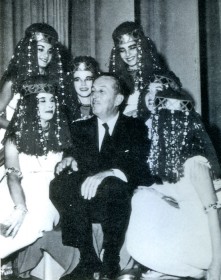 I made a deal with some of the teachers at Choulnard to come out and work with me, to sit with me by the day and know my problems. That, In turn, gave them the chance to know what we had to work on. They sat tight In the room with me; I picked Graham because he was more Life . . . figures and movement and things . . . simplification. So Graham sat with me In what we called our sweatbox. Fifty percent of my time was spent In the sweatbox going over every scene with every animator.
I made a deal with some of the teachers at Choulnard to come out and work with me, to sit with me by the day and know my problems. That, In turn, gave them the chance to know what we had to work on. They sat tight In the room with me; I picked Graham because he was more Life . . . figures and movement and things . . . simplification. So Graham sat with me In what we called our sweatbox. Fifty percent of my time was spent In the sweatbox going over every scene with every animator.
The sweatbox was an un-insulated projection room which Walt describes as “hot as the dickens,” where animators would come to sweat out Walts approval of their latest attempts. ‘They used to dread comin’ in… I’d just tear hell out of’em,” but this was all part of the learning process as both animators and studio head ____________Walt at Egyptian Ball – 1956
worked out the best solutions for making the
moving figure work. So Graham was soon a part of this process and carried Walt’s ideas back to his classroom.
Reciprocally, a bit of Graham (and Nelbert) rubbed off onto Walt as they worked together 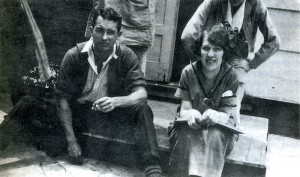 on the problems of animation. Said Walt:
on the problems of animation. Said Walt:
I set up a whole new thing (which Is) having Us effect now among the artists. We think of action. We think of drawing for action. We call It action analysis. You draw from a static figure when you’re In Life class. And your model’s sitting there. You’re draiumg the spinal column … the whole anatomy… _______Don Graham on the porch of the 8th St. School
but you don’t get any feeling of action.
So we have the model go through actions. She goes through It and then.. .sits over In the corner.. .and they sketch what they saw. What you see here (Is) not a literal copy of something. It’s.. .the Illusion you get.
Even before Walt had come to California — when he was only 19 — he had frugally photostated Muybridge’s now-famous movement photographs out of a borrowed library book, then cut them up and overlapped them in an attempt to analyze motion. But now it was a new kind of challenge — doing it with drawing. Walt further describes that challenge:
We’ve got to analyze the walk. So we would then photograph people going through actions… then we would study It. There were a lot of things I was able to get over that way. You’d have a running action. We’d draw. (It’d) be perfect because (we’d) be looking at that drawing Individually on the drawing board. (But) It doesn’t look that way; that’s what gave us stiff animation. Then we got the trick of blurting.. .In effect, elongating. When you’re moving fast Is when the action begins to take on a smoothness.. At wasn’t numbers of drawings. It’s how drawings are made.
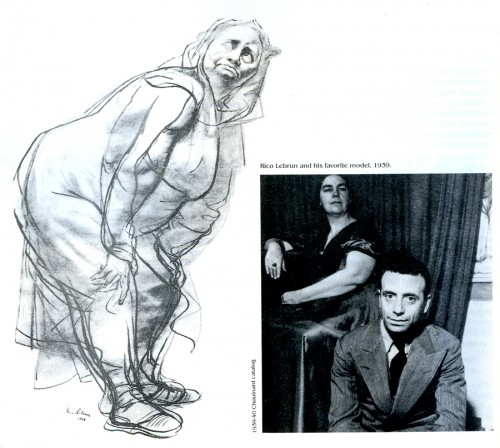
Rico LeBrun (who taught animal anatomy to the animators
at Disney during the making of Bambi) and his favorite model
-
The ideas that developed during Disney’s training period (1930-1940) were greatly aided by Don Graham. Eventually Walt hired him at Disney Studios as head of their own night school. So Nelbert’s influence and ideas were carried out into the professional world. In the animation industry alone Chouinard students and teachers like Graham, Dike, Caldwell, Davis, Gramatky, Fleury, Johnstone, Lebrun, Lee and Mary Blair, T. Hee, Plummer, and many others became important stimuli to the successful growth of the animated film.
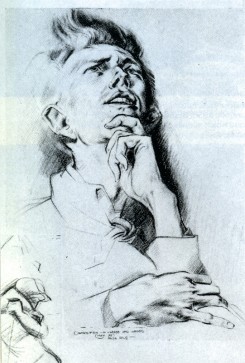
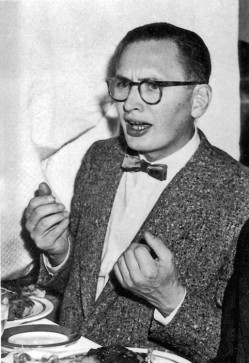
A drawing by Retta Scott | Virgil Partch at a Guild Meeting
The book is a treat. I’ll add more to this in a future post.
Animation &Hubley &Tissa David 13 Apr 2009 07:43 am
Seeding
-Tissa David animated the entire film for John & Faith Hubley. This short, as I said in previous posts, was done for PBS’ Great American Dream Machine for producer, Elinor Bunin. As Bob Blechman verified, they were given very little money and time to do an 8 min. short. The Hubleys gave life to the short by putting it on the theatrical and festival circuit.
Here’s a rough run cycle Tissa did for the Goddess of Fertility, who goes about inseminating the world with her seed. Tissa adds to its eccentricity with having the low point in the cycle the passing drawing. She comes up as each leg hits the ground.
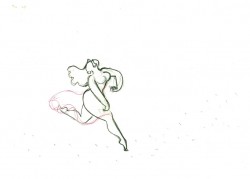 1
1 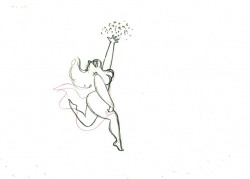 2
a “Goddess” run cycle from Eggs
2
a “Goddess” run cycle from EggsOn threes at 24FPS
Click left side of the black bar to play.
Right side to watch single frame.
Daily post 12 Apr 2009 07:41 am
Easter
Commentary &Photos 11 Apr 2009 07:56 am
Fire!
- How tenuous everything is.
On Thursday a pitcher for the LAAngels was killed in a hit & run accident.
That night the same thing happened to a non-celebrated woman in Brooklyn.
You never know what you’re going to face when you get out of bed.
When you’re a kid, there’s a strong compulsion to chase after the speeding fire truck, with the loud sirens, the speed, the unique look of the hook & ladder.
When you get older, the fire trucks are just as compelling. However, I think the reason is for the tragedy playing out at the end of their mission.
Walking up Bleecker Street yesterday, early morning, you could see the flashing sirens, the multiple trucks and ambulances, the whirring lights. As I got closer to the scene it was obviously a fire in progress and a lot . . . I mean a lot of fire trucks and firemen.
I walked by on the other side of the street and took a rash of photos. It makes for a good Saturday post, so here are those pics.
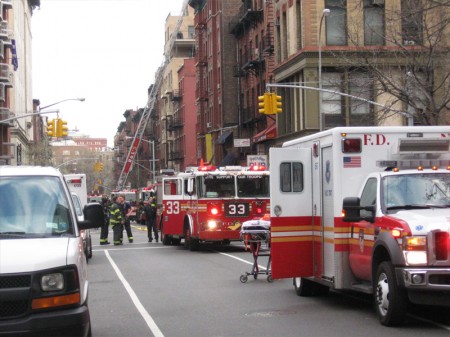
From about half a block away, the buildup of fire trucks was overwhelming.
You could see a ladder going up to a building’s roof and
the lightest wisp of gray smoke coming out the top.
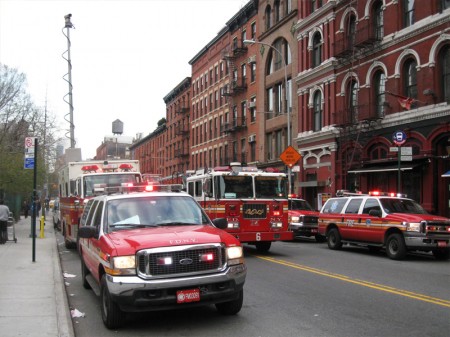
Trucks even filled the neighboring cross streets for two full blocks.
There were a lot of firemen at work here.
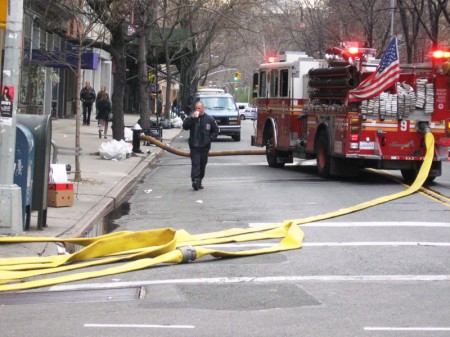
The fire hydrant issuing water was a full city block away
from the building on fire.
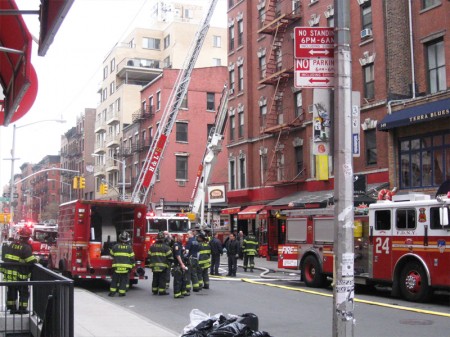
As I got closer, the numbers of firemen increased.
They milled about and watched intently.
Some carried objects back to the trucks.
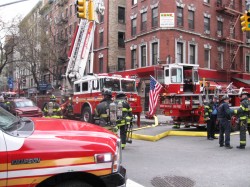
Two ladders shot up on separate streets to the corner building.
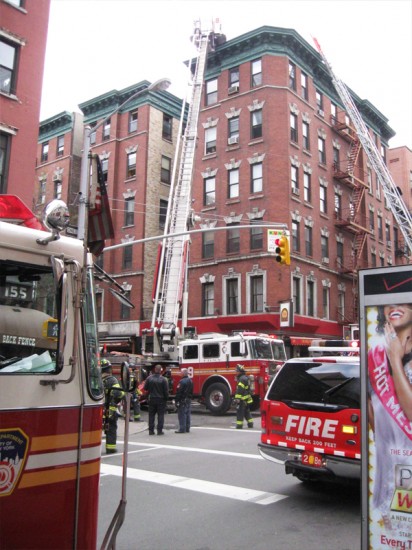
A quiet business continued as I moved past.
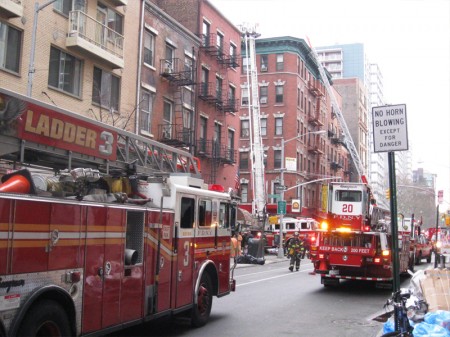
I got the sense that all was in order as many of the
fire workers went to their vehicles.
Hopefully no one was hurt or actually lost anything in the fire.
